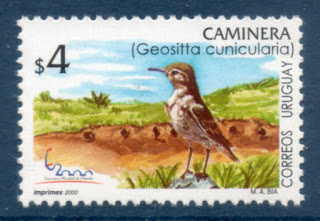Animals - Birds - Songbirds
Many-coloured Rush Tyrant (Tachuris rubrigastra)
Scientific Classification:
Kingdom : Animalia
Phylum : Chordata
Class : Aves
Order : Passeriformes
Family : Tyrannidae
Genus : Tachuris
Species : T. Rubrigastra
Description:
The Many-coloured rush tyrant (Tachuris rubrigastra) or Many-colored rush tyrant is a small passerine bird of South America belonging to the tyrant flycatcher family. It is the only member of the genus Tachuris and its relationships with the other members of the family are uncertain. It inhabits marshland and reedbeds around lakes and rivers. It is particularly associated with stands of Scirpus. The nest is built among plant stems.
There are four subspecies: T. r. rubrigastra is the most widespread, occurring from south-east Brazil to southern Argentina and central Chile. T. r. alticola is found in the Andes of south-east Peru, west Bolivia and north-west Argentina. T. r. libertatis is found in coastal Peru while T. r. loaensis is restricted to Antofagasta Region in northern Chile.
It is a small bird, 10.5 cm in length. The tail is short, the wings are short and rounded and the bill is slender. As the bird's name suggests, the plumage is very colorful. The back and rump are green while the underparts are yellow apart from the white throat, black breastband and red undertail-coverts. The face is dark blue-grey, there is a yellow stripe over the eye and the crown is dark with a red patch that is often concealed. The wings and tail are dark with a white wingbar and white outer tail-feathers. Juveniles are considerably duller than the adults.
Binomial Name:
Name : Tachuris rubrigastra
Taxonomist : Louis Jean Pierre Vieillot (Yvetot - France)
Year : 1817
Subspecies : 4 (Rubigastra, Alticola, Libertatis, Ioaensis)
Synonyms : Sylvia rubrigastra
Conservation Status by IUCN:
Status : Least Concern
Has been categorized by the International Union for Conservation of Nature as evaluated but not qualified for any other category. As such they do not qualify as threatened, near threatened, or (prior to 2001) conservation dependent.
Philatelic Issues
1999 - Uruguay - Stamp 4 of 4, from Birds and Trees Series
Issue information:
Country: Uruguay
Date: April 14th, 1999
Printed: 35.000 Copies
Type: Stamp from Series of 4 Stamps
Value: UYP 7
Stamp: Rectangular
Size: 39 mm. x 27 mm.
Perforation: Circular
Gum: Water Activated

























